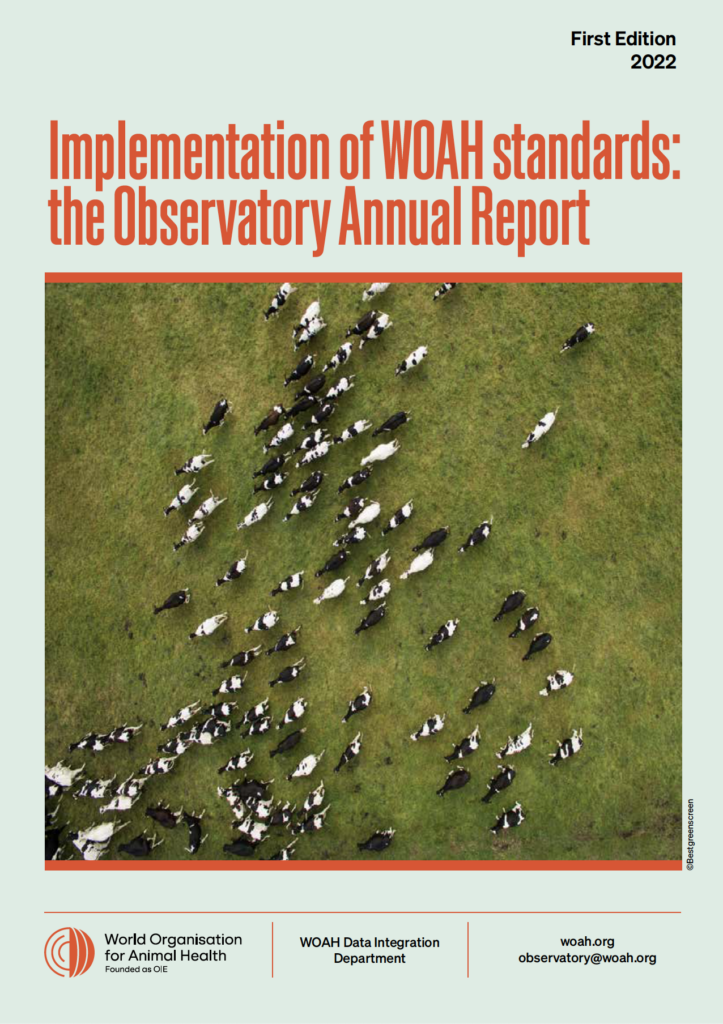Monitoring emergency preparedness
When there is an animal health or welfare emergency, the effectiveness of the response depends on the level of preparedness of the Veterinary Authority and relevant stakeholders. The World Organisation for Animal Health (WOAH, founded as OIE) develops international standards and guidelines for emergency preparedness, including contingency plans and simulation exercises. Monitoring emergency preparedness can bring valuable insights for both WOAH and WOAH Members.

Through its Annual Report, the Observatory presents a global overview of the level of uptake of WOAH standards that relate to emergency preparedness.
How can you access our emergency preparedness analysis?
The emergency preparedness dashboard presents the results of the analysis in an interactive way.
Errors in some of the original calculations were corrected in this dashboard after publication. This may result in slight discrepancies between the data in the dashboard and the 2022 report / factsheet which have not been corrected.
To discover the results of our emergency preparedness analysis, access the full report as well as the one-page executive summary.
How did we monitor the implementation of emergency preparedness standards?
Monitoring the implementation of standards related to emergency preparedness requires to building and analysing indicators using various data sources.
What emergency preparedness indicators did we use to monitor the implementation of these standards?
Several indicators made it possible to monitor the implementation of standards related to emergency preparedness, among them:
Number of simulation exercises reported to WOAH
Number of Members that reported having a contingency plan
Percentage of Members that reported having a contingency plan and a recent simulation exercise for the same diseases
Percentage of Members that have an officially recognised disease-free status AND that have reported having (i) a contingency plan and (ii) a recent simulation exercise for this disease
Percentage of Members that have an officially recognised disease-free status AND that have reported having (i) a contingency plan and (ii) a recent simulation exercise for this disease
Performance of Veterinary Services regarding emergency preparedness, as assessed by the PVS Tool:
– Percentage of Members that have been assessed with a Level of Advancement of 3 or more for each of the two PVS Critical Competencies directly relevant to emergency preparedness (I-9 Emergency funding and II-6 Emergency response)
– Percentage of Members that have been assessed with a Level of Advancement of 3 or more for both PVS Critical Competencies directly relevant to emergency preparedness (I-9 and II-6)
What data sources did we use to build emergency preparedness indicators?
Five main data sources made it possible to build the monitoring indicators:
Data related to simulation exercises: data extracted from the WOAH website and compiled by the WOAH World Animal Health Information and Analysis Department (2002-2021).
Data related to contingency plans: data extracted from a WOAH one-off review provided by the WOAH Preparedness and Resilience Department (2018).
Data related to officially recognised status for AHS, BSE, CBPP, CSF, FMD and PPR: dataset provided by the WOAH Status Department, as recognised at the end of December 2021.
Data related to self-declared free status for ASF, avian influenza and rabies: dataset provided by the WOAH Status Department, as recognised at the end of December 2021.
Performance of Veterinary Services on emergency preparedness: PVS dataset, as compiled and provided by the WOAH Capacity Building Department (2016-2021)
More on the topic
-
Observatory
The Observatory is a transversal programme that provides an overview of the uptake of international standards on animal health and welfare and veterinary public health by our Members. It contributes to the progressive improvement of their implementation as well as to the constant assessment of our corporate initiatives by providing valuable feedback and recommendations.Discover -
Emergency Preparedness
Today’s highly interconnected world faces many health security threats caused by disease outbreaks, climate change, conflict, and other factors. Emergencies and disasters are often complex and involve multiple hazards which can take different shapes and forms.Discover


